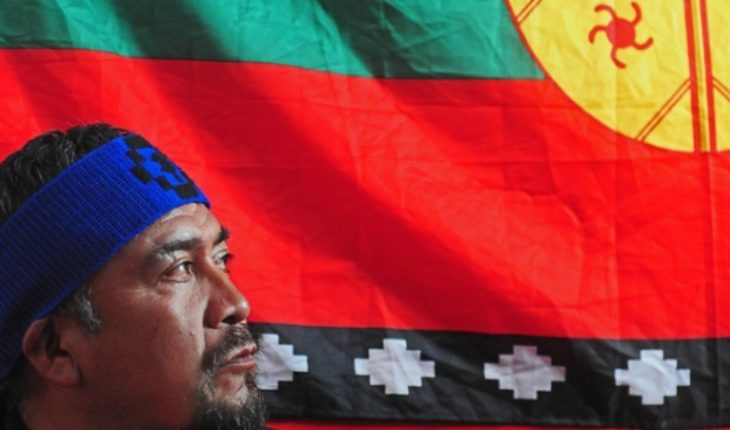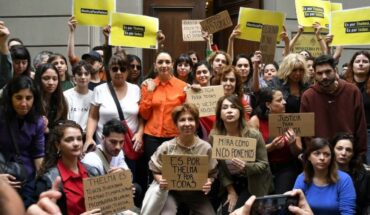Past ten in the evening of October 19, the so-called “jungle command” of uniformed police special forces carried out a new intervention in La Araucanía, which ended with a mapuche farmer formalized by hom frustrated coach against police and illegal possession of weapons. Jorge Cayupán was reported, while he was hospitalized at the hospital in Temuco by a series of convulsions, vomiting, a bullet wound and a fracture of tibia.
During the night, the “jungle command” – trained by the anti-narcotics police of Colombia – reached community Mateo Ñirripil, which belongs to the Lov Muko in the South of Lautaro. In the process, would have tried to do a control by a red van which, according to police, was occupied by five hooded people who would have given to the flight, along with firing at police officers, that product of the outbreak ended up wounding to the villager.
But the history of Cayupan, his family and lawyer, is another. They say that that night the designated command of uniformed police would not have had unprovoked while controlling one of the roads of the community, and that it would have started firing at the red van that traveled the comunero, vehicle that was hit on ten occasions by bullet impacts. One of these was that ended up on the leg of the villager, who also denounced that he was beaten by police officers.
After being discharged, Cayupan must be in custody four months lasting research. A story known to him, who has already been acquitted twice of charges for anti-terrorism law and was on hunger strike in the year 2010, during the first Government of Sebastian Pinera.
The deployment of the “jungle command” is part of a series of interventions which, according to human rights observers – have intensified during October, right in the middle of the white of the popular March Plan Boosts Araucanía, which launched the Government of Sebastian Pinera a month earlier with a broad deployment of the Minister of Social development, Alfredo Moreno, who not only mobilized entrepreneurs to the area, they also met with many actors of La Araucanía and the most innovative and bold , invited to the dialogue the Coordinadora Arauco Malleco (CAM), until then stigmatized by the Executive as the extremist organization.
Despite the communications and territorial deployment of Moreno, the so-called “Plan Araucania” has been criticized by many communities and mapuche organizations. Not only by the lack of binding participation from a stakeholder or tax which will mean major forest, salmon and hydropower industry in the area, but because the proposal does not consider the political and vindictive nature of the demands of the mapuche people.
Moreno moves
the mapuche historian Fernando Pairican ensures that, in the past 20 years, in Chile there has been a “Club” culture combined with economic revitalization and cultural integration. A modus operandi that during these first months of Pinera’s Government has taken a bold innovation: the interest and attempt to position the CAM as a legitimate actor to talk.
in this way, Minister Moreno and his pair of Interior, Andrés Chadwick, have noted publicly that they are willing to talk to the Coordinator and his spokesman, Héctor Llaitul, if they let the actions of resistance, such as the burning of trucks. Moreover, Moreno called them, together with other actors of the mapuche people, for a Summit of leaders of La Araucanía, named 3xi, which took place at the beginning of August, in order to prepare the prelude to the launch of the Plan drives.
The “Moreno approaches were bordering, surrounding, the toughest sectors as the CAM”, said a source of the mapuche more institutional sector and highlights that the Minister made a strategic round to try to bring to recognized leaders, who in the last were disturbed by the anti-terrorism Act.
In this way, they marked a precedent talks with Víctor Ancalaf – the first mapuche convicted by the anti-terrorism law in our country–and with the lonko Aniceto Norín, who in 2003 was sentenced for terrorist threat, trial that was cancelled eleven years then by the Inter-American Court of human rights (IACHR).
The move with Norín went further. Using as an intermediary to the director of Conadi, Jaime Retamal, Minister Moreno materialized – in the middle of the closing of the case – a meeting between the villager with Jorge Luchsinger, son of the couple who died burned at his home in January 2013. The meeting was marked by the call for peace made by both parties and the backing of the Luchsinger family at the request of the Machi Celestino Córdova, have special permission to attend his rewe, reason why had been 102 days on hunger strike.
A deployment that was successfully crowned the embrace between the lonko Norín and President Piñera on June 28, as part of a religious ceremony in La Araucanía. Image struck and from the currency showed this act as an approach to the more radical world of the mapuche people, which “brought good income Moreno to the interior of the Government”, recognized from Palace.
If it was positive for the currency, an internal conflict was opened in the bosom of the mapuche people. Pairican explains that Norín is not one leader of any, that he “endured political prison when it was not so common” and “responds to the old ways of lonko, he sees the negotiations as a statesman”. Historian points out that Norín “not negotiated subject to Creole”, or in the rules of the Chilean State, but which responds to the premise of being “ruling for its historic loft”.
A position that arouses criticism – adds Pairican – the younger nuclei mapuche, who considered that “it must not negotiate with those who have exploited you”. Then, there is a generational debate to the interior of the mapuche people, “but you have to understand who is Norín in mapuche history.”
Those would not have been the only attempts to approach that Moreno, deployed since from the mapuche sector they claim that the Minister would have tried to build bridges with the leaders of the community of Temucuicui, Michael Carbone and Jorge Huenchullán, meetings that not is they would have materialized.
Since the CAM separated waters, they refuse all kinds of participation in the Summit 3 x 1 and emphasize Ancalaf and Norín “not part of the CAM, or represent it in their ideas. In this sense we left clear that the only valid representative for these instances is our public spokesman Héctor Llaitul”. They say they are open to dialogue “when it has to do with substantial materials and historical demands of our people, never for crumbs or measures that mean the subjugation of our people”.
The strategic CAM strategy looking to the Coordinadora Arauco Malleco as a relevant actor not only would go through the perspectives of Moreno. The Minister Chadwick, who pushed for the more repressive line on the so-called macrozona, from the hand of the arrival of the “jungle command”, would also see the CAM as a strategic actor, beyond actions such as burning of trucks.
Since the Government recognized that the CAM has “political unity”, a clear strategy and a political horizon which is self-determination. In addition to a structure, even though it is in hiding, he took a path of social visibility that has at least Llaitul as the public face of the actions.
in the middle of the “low-intensity war” – as it is called inside the Executive–who leads the “jungle command” in the territories “in recovery”, the Government you would like to keep a CAM “active support and strong, because without it others emerge much more radical groups”, as explained from the own ruling. that would be the way to try to control the intensification of actions inside the territories “in recovery” which are not necessarily linked to the territorial nucleus of the Coordinating Committee, along with “isolate” other organic as Weichan auka mapu (WAM), which attributed to him some attacks, including the burning of churches.
While El Mostrador tried repeatedly to discuss the issue with the Ministry of the Interior, they indicated they will not refer to it or to the work done by now by the “jungle command” in the macrozona.
Apart from the issue of security, in the last year and after its social opening, the CAM has managed to have a more open and cross, recognition not only in the Latin American indigenous movement, but also in European countries, even more so after accredited the mounting of the Operation hurricane. During the past week, Llaitul was tour of Geneva, in Switzerland, and took part in the picture of the Working Group of the UN on transnational corporations, denounced the operations of the subsidiary Arauco of the Angelini family and, on the other hand, the CMPC-Mininco linked to the Matte family, in addition to the construction of the MAPA project.
Not only that, Llaitul also denounced the mounting of the operation hurricane and took aim at the political responsibilities of the State and of the Government of former President Michelle Bachelet, who today heads the UN Human Rights Department.
“For the historian Pairican, the Coordinadora Arauco Malleco is one of the”most important organizations of the mapuche history and the safest is to have a honor roll at the office of a mapuche political future”and stresses that its founders come from” “a life in poverty, there were forging their political thinking, autonomy”.
“The CAM is a school social and political of the mapuche movement as a whole, which helped the formation of the consciousness of the mapuche nation, which comes from a history of resistance between 70 and 90 “, sentence Pairican.
Fissure on the right according to the historian, “the most interesting debate this is the differences to the inside of the right”. There is a kind of duality in the region, where the image of the Mayor of La Araucanía, Luis Mayol, who was director of the national agriculture society (SNA) and Director of the CPC, representing the right landowner, “thorough and dairy that is not neo-liberal and that it requests the protection of the State. The same as that in the year 72 moved radically against agrarian reform and ended up hanging mapuche villagers in helicopters”.
A right which, she adds, is “much more racist than the Santiago, more Christian than Moreno, who is more liberal,” a fact that is recognized to the hosts of Chile are going inside, where admits that these “Moreno approaches” did not result in a transverse back in the sector, “at least to the interior of entrepreneurship”, and that there would be very few commonalities between local governments and the centralized gaze of the Minister of Social development.
That ambivalence on the right would be reflected, they claim in officialdom, the figure of Senator Felipe Kast, “who aims for both sides: economic revitalization and heavy-handed”.





